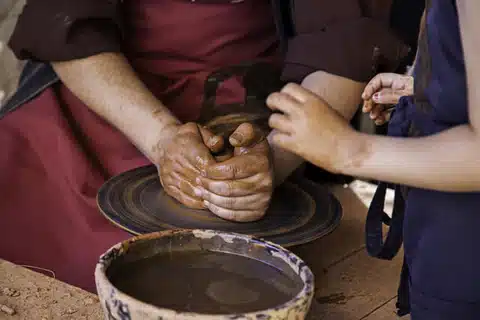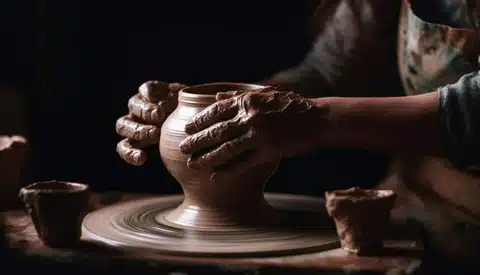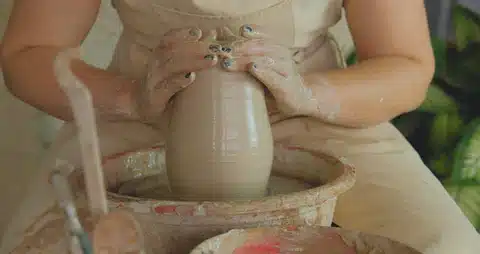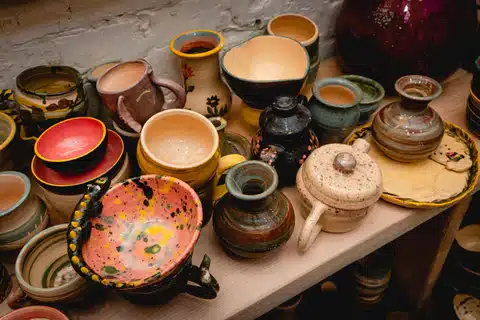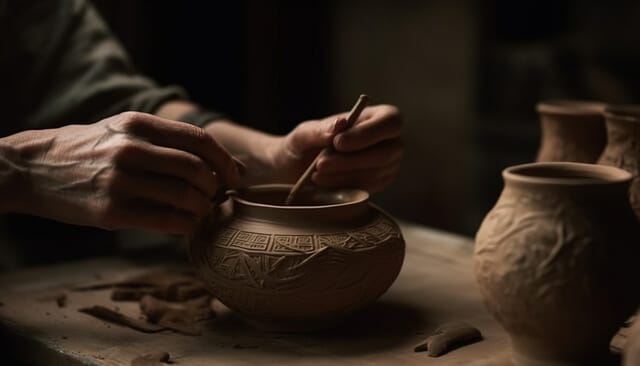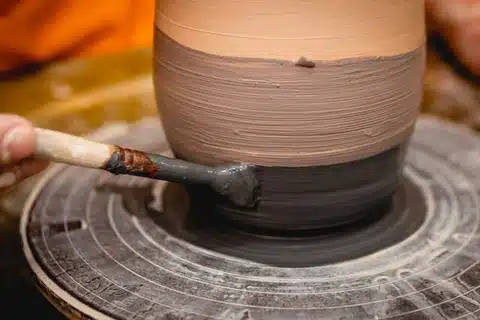How to Use Kiln Wash and Why Do you Need it?
Successful kiln firing depends on many things, but one thing that ensures every potter’s work is rewarded and their tools remain protected is kiln wash. If you are a budding potter discovering the mesmerizing art of pot making, you might not know about kiln wash.
What is kiln wash? How do you use it? And why is it important? You will get answers to all these questions. Just keep reading!
This article will cover everything you need to know about kiln wash. From its purpose to the method of application, we will discuss everything one by one.
Whether you are a budding potter doing this for a hobby or a professional, learning how to use kiln wash will help you make tremendous art.
What is Kiln wash?
Kiln wash is a compound that is applied to the shelves of your kiln to protect against glaze. Kiln wash is also called shelf primer that acts as a sacrificial layer between kiln shelves and your ceramics. When you fire pots under the kiln, the glaze can stick to the kiln shelves and damage the whole kiln.
You can easily make kiln wash at home following the many recipes available on the internet, but artists usually prefer buying pre-mixed recipes to save time.
Kiln washes are made from materials that have high melting points. The recipe of the wash can vary, depending on the firing temperature you are using. Most temperature kiln washes contain zirconium or alumina because they have high melting points. These kinds of washes are ideal to use at lower temperatures but can be more costly.
Why Do I Need Kiln Wash?
Kiln shelves are made from hard materials that are easily breakable. Any kind of glaze or ceramic piece that comes in contact with the kiln shelf can easily stick to it. This means when a runny glaze gets fused to the kiln shelf, either your pot or the kiln shelf needs to be broken. Unfortunately, it is always the pot that gets sacrificed because kiln shelves can be costly. Kiln wash is a magic compound that protects both your art and the shelves during firing. Not only that but, kiln wash also prevents the cracking of ceramics when you are taking them out of the kiln.
Plucking is another reason why you need to use kiln wash. Plucking is when your pots become so melted that tiny pieces of your ceramic get fused to the kiln shelf, ruining both your art and your kiln.
To achieve better results, you need to buy a kiln wash that is not too powdery and comes easily off of your kiln shelves.
How Do I Mix and Use Kiln Wash?
Pre-mixed kiln wash often comes in a powdery state. Here is how you can mix and apply kiln wash:
1. Fire the Shelves
If you are using new kiln shelves, you must fire them in an empty kiln to remove residual organic materials. Manufacturing can often leave organic residue on the shelves which can easily be removed through firing.
2. Mix Wash
Mix the powdery substance into the water until it starts looking like skim milk. Your wash should not have any precipitates.
3. Apply on the Shelf
Using a spray or a paintbrush, apply a very thin coat of the pre-mixed wash to the kiln shelf. Make sure to brush a thin because a thick wash can cause more peeling and cracking. You will also need to make sure that the kiln wash doesn’t stick to the edges of the kiln as it can peel off during firing and ruin the ceramics.
4. Apply at least 3 Layers
To ensure there is enough separation between the kiln shelves and your pots, apply at least three complete coats of kiln wash. Let one coat dry completely before applying the next one. A single coat can take up to 60 minutes to fully dry.
Potters often fire between the wash applications to save time.
5. Scrape the Flakes
Kiln wash can sometimes flake off, and these flakes regularly need to be removed to avoid any costly problems. If you notice that the wash on your kiln shelves is peeling, take a paint scraper and scrape off the flakes. Then reapply the kiln wash onto the bare spot.
Takeaway
Kiln wash is very important to prolong the life of your kiln and protect your ceramics against damage. Buying a pre-mixed kiln wash can save you precious time, but there is also nothing wrong with using a homemade kiln wash. There are many recipes available on the internet that can give you satisfactory results.

